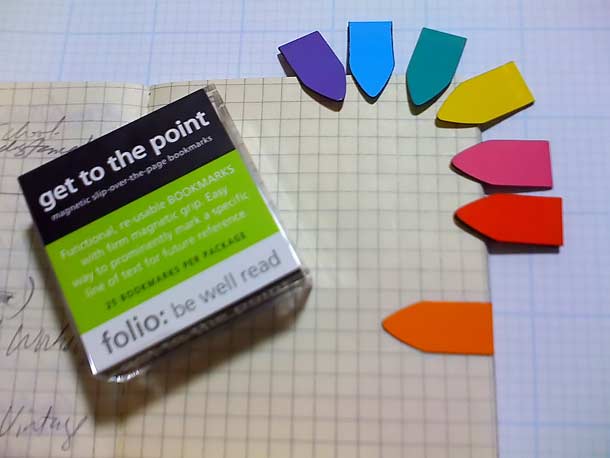Every week web.without.words takes a popular and known website and reconstructs it by removing all words and images, replacing them with blocks (a common "concepting" phase of any design process).
Blog
Get To The Point Bookmarks
Seems like someone has come up with a better solution for marking my note and sketch pages in my Moleskines. Dog eared pages never suited me, and the colored tabs I get at MUJI and the occasional PostIt note are OK. But I love the idea of these magnetic page markers from Folio because it means I won't need to buy anymore sticky tabs from the stationery store. And the little pointed arrows are pretty useful for pointing out lines of interest in books too.
http://www.spoonsisters.com/Merchant2/merchant.mvc?Screen=PROD&Store_Code=100&Product_Code=44308
What Goes into a Well-Done Critique
Jared Spool writes an excellent article describing how to give a good design critique.
A well-done critique is a way to step away from the specifics of the design process and better understand how to create great designs. We do this by starting with the current design and asking "What is it we're really trying to do here?" and "How close are we to doing it?"
The design crit is one of the most valuable parts of the design process to me. Interaction designers and information architects without design or art backgrounds often find themselves new to the critique, but over time learn that the practice is a necessary aspect of evaluation and assessment of the work. The dialog, reframing, and perspective offered in the critique really helps the designer working in isolation. Spool offers some good advice for how to frame comments positively and respectfully, how to develop a healthy environment for critiquing, and how to use the crit to keep designers thinking about possibilities and alternative solutions.

